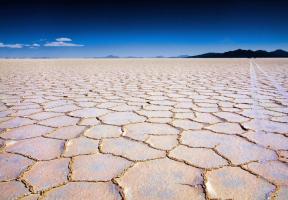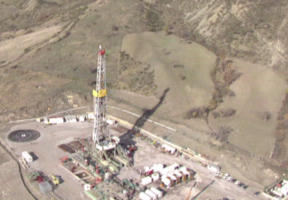What is "Unconventional" Oil and Gas?
10 min read
"Unconventional" oil and gas is not different from "conventional" oil and gas. The distinction stems from their position underground or from the unusual nature of their reservoirs. These conditions require the use of new, often complex, extraction methods. Below is a simplified summary of these oil and gas resources.

© - Aerial view of the oil sands extraction site operated by Canada-based Syncrude, located north of Fort McMurray in Alberta Province.© AFP
Oil and gas deposits take millions of years to form. Following a period in which plant and animal matter is gradually buried, oil and gas form very deep underground in source rock. Then they begin their migration toward the surface, sometimes accumulating in porous, permeable reservoir rocks when sequestration conditions are favorable.
Over the past decades, oil and gas companies have first focused on developing the "easy" reservoirs with the greatest porosity and permeability, followed by reservoirs located deeper underground or in hard‑to‑reach areas and, lastly, the source rock itself. At each stage, the technologies used have become increasingly complex and efficient.
The breakdown below is divided into liquid and gaseous hydrocarbons, distinguishing each time which resources come from reservoir rock and which from source rock.
1. Unconventional liquid hydrocarbons
Oils found in reservoir rock
- Tight oil: oil found within reservoirs of very low porosity and permeability and often small size, making the oil difficult to recover. Exploiting the resource requires the use of expensive techniques, such as and horizontal . Due to the low permeability of the rocks, the oil does not easily flow up to the surface and chemical products are often needed for greater fluidity.
- Heavy and extra-heavy oil: oils found in reservoirs with porosity and permeability properties similar to those of conventional deposits. However, their high density and viscosity makes them difficult to extract using traditional methods. More often than not, these deposits used to be conventional, but over geological time the oil has degraded due to intense bacterial activity. The vast majority of heavy and extra-heavy oil deposits are exploited in Venezuela.
- : a mixture of sand and bitumen that is highly viscous, becoming solid at room temperature. Oil sands are found in conventional deposits that have risen to the surface due to erosion or tectonic activity. The bacterial degradation of oil sands is even more significant than in heavy and extra-heavy oil. Surface mining or in situ methods involving steam are used for extraction. The main oil sand reserves are located in Canada.
Oils found in source rock
While reservoir rock is usually porous, source rock is more often clayey with a plate-like appearance, hence the name "shale".
- : oil found in source rock that has not been buried deep enough for the organic matter to turn into oil. Oil shale is extracted using surface or underground mining then heated to a high temperature (450°C) to obtain the oil – picking up where nature left off. The disadvantage is that a lot of water and energy is needed to the rock, resulting in a yield similar to oil sand production and lower than that of conventional oil.
- : oil that is trapped in source rock and has not been able to migrate toward the surface. and hydraulic fracturing techniques must be used to release the oil. Shale oil production quickly grew following production in some basins in Texas and North Dakota, and fueled the recent growth of U.S. oil production
2. Unconventional gaseous hydrocarbons
Gas found in reservoir rock
Tight gas: gas found in the same type of reservoir rock as tight oil, i.e., with low porosity and permeability. The same methods – hydraulic fracturing and horizontal drilling – are used for extraction.
Gases found in source rock
- Shale gas: gas trapped in clayey source rock buried at varying depths below the surface, with high organic matter content. If the gas is buried deeply, it is known as "dry gas" (methane). If it is less deeply buried, it is known as "wet gas" ( , butane, propane). Made possible by hydraulic fracturing, shale gas production revolutionized markets in the United States, reducing -fired generation and prompting the beginning of exports.
- Coalbed gas (also known as coalbed methane): natural gas that is adsorbed in coal seams. Adsorption (not to be confused with "absorption") traps gases on the surfaces of solids. Coal has significant adsorption capacity. The release of adsorbed gas on coal produces firedamp, which causes mine explosions. Coalbed gas is extracted by pumping off water in the fracture spaces, which decreases the pressure in the coal bed. Coalbed gas is produced in more than a dozen countries worldwide.
Methane
In a category of its own, methane hydrate is a mixture of water and methane that accumulates in ocean sediments near the sea floor and in permafrost in Arctic regions. Under certain pressure and temperature conditions, methane hydrate crystallizes, forming a solid. However, extracting these crystals is costly and complex.

















